Yoghurts and pot desserts may be a thriving £2bn market but consumption still lags behind Continental levels. What can be done to catch up, asks Paul Simpson
British shoppers don't 'get' yoghurt in the way their European cousins do.
Although they spent £2bn on yoghurt, chilled desserts and fromage frais last year up 8% on the year before [Kantar Worldpanel 52w/e 24 January] they still consume 16.7% less yoghurt per capita than the European average, according to Müller UK chief executive Gharry Eccles. And with a whopping 35% growth predicted for Europe by 2012, that gap may never be closed.
But that doesn't mean suppliers aren't pulling out all the stops to accelerate what by the usual category and wider grocery standards is impressive growth in the UK.
Over the past year almost all the major brands have capitalised on heightened consumer interest in functional foods, health in general and affordable indulgence with targeted NPD (think limited editions and exotic new flavours) and marketing campaigns (cannily focusing on touchy feely issues such as provenance and Tummy Loving Care rather than the dull but worthy scientific messages of yore).
Many have enjoyed impressive sales growth as a result, but at a price. With own-label sales lagging behind, retailers stand accused of deliberately limiting the space devoted to brands on shelf.
Another issue, says Müller, is that price deals, multibuys and deep-cut promotions continue to dominate the category potentially constraining future value growth.
Yet despite the prospect of a turf war between branded and own label, the big brands remain upbeat about the category's prospects, especially when it comes to yoghurts, which are driving much of the current growth.
"We believe that there are four reasons to be optimistic about the category: the quest for a healthier and more balanced diet continues; the stronger brands are performing well; suppliers are investing; and there is a lot of new product development on the horizon," says Eccles.
With consumers already buying more per trip than they were a year ago (see boxout left), the challenge now is to get the 96 out of every 100 households that buy into the category to also purchase more often. Müller's latest category report suggests that only 3.5% of British breakfasts and just one in six lunchboxes include a yoghurt. The typical Brit eats just seven chilled yoghurts or pot desserts as a snack as opposed to with a meal a year.
One of the ways the brands are trying to broaden the appeal of the category is by focusing on more effectively communicating the merits of their ranges through relevant (but not overly scientific) marketing.
One functional product to have benefited significantly from a lighter-hearted touch to its advertising is Danone Activia. Its decision to ditch the unintentionally amusing and mildly offputting talk of improved transits for the easier-to-digest concept of Tummy Loving Care in the Martine McCutcheon ads has helped boost sales 22.3% to £219.8m [IRI].
With functional products growing in popularity anyway, it's no surprise that the sector has grown more than any other in the category at about 14% [IRI 52w/e 20 February] or that products that do not offer the wealth of benefits of functional are not doing so well.
Fat-free once the gold standard in healthy yoghurts is no longer enough of a calling card. Shoppers are now more focused on digestion, vitality and boosting their immune systems than simply trying to lose weight. This is in keeping with the continued consumer shift towards healthy eating, especially among older shoppers, believes Activia marketing manager Corinne Chant.
"There is an increasing demand from consumers seeking to improve their health," she says. "The future for functional yoghurts looks positive as the percentage of people over 45 in the UK looks set to increase in the next few years, and they are a key target for this segment."
Science is no longer the big selling point it once was for this group or the wider demographic that healthy products now appeal to. And brands are not just changing their advertising tack to reflect this. Lactalis-Nestlé has made significant changes to the packaging of its Ski brand in light of the value and volume decline it was experiencing in 2008.
Research revealed that "strategically, we were being too scientific", says MD Ciaran Sullivan. Ski had become cluttered with too many health messages, and consumers had lost sight of why they liked the product. By focusing on the packaging on the product's taste, its fruit content and all-natural ingredients, Lactalis-Nestlé has turned its figures around, increasing value sales by 5.7% in the second half of 2009.
Emphasising a product's taste is key, even if it also boasts lots of health benefits, agrees Crispin Tweddell, MD of sheep milk yoghurt producer Woodlands Dairy. "Yoghurts aren't medicine," he points out. "If they don't taste delicious, you won't come back, no matter how much good they do you."
That's why Yoplait's Perle de Lait, launched in the UK this year following success in France, is presented as a tastier option in the new ad for the brand, which has already achieved UK sales of £231,812 [IRI]. "I used to eat sour yoghurts but you could tell I didn't like it," says the actress.
It is not just the quality of the advertising that has given the yoghurt sector a signficant boost, though, it's the amount. Although the overall spend among the top 10 brands was down (see boxout), the big brands continued to invest big bucks on brand advertising last year. According to Müller's category report, key players spent a total of £74.4m in 2009, Müller accounting for £38m of that.
The level of spend was no doubt influenced by the entry of Austrian dairy Nom Dairy to the market. Though it's only listed in Morrisons and Sainsbury's at the moment, it has big plans for the UK and the existing players are nervously watching their backs. The downside is that the brands' success has come at the expense of own-label yoghurts, which fell 17.3% in value in 2009 [Kantar]. This, claims Müller, has prompted retailers to fight back by pushing their own-label offers and assigning less shelf space to brands.
Category "is a bit schizophrenic"
Müller believes retailers are being shortsighted and that instead of fighting with the brands, they should be collaborating with them to increase category sales by encouraging shoppers to broaden their consumption. This is already starting to happen, says Rachel's marketing director Steve Clarke.
"The category is a bit schizophrenic at the moment, with shoppers driven by different needs and occasions," he says. "On the one hand, the desire for a healthier dessert or snack, breakfast product or cooking ingredient is driving sales of low-fat, very low-fat yoghurts and natural yoghurts. On the other hand, the desire to indulge is fuelling demand for indulgent, ready-to-serve desserts."
But to drive the kind of per capita increases Eccles envisages, yoghurts and chilled deserts need to reach yet further beyond their traditional customer base, which Müller describes as kids and those 'trying to hold back the years', and appeal to the types that are currently the least frequent yoghurt consumers the 'juggling and struggling', 'busy convenience snackers', 'body-conscious careerists' and 'young teens'. In a bid to appeal to these groups, Müller introduced Bio yoghurt corners in January this year targeting breakfast, and in February it launched 95g Mini Müller Rice pots (standard pots are 190g) aimed at the snacking market.
Innovation
NPD-wise, things are starting to look up after what can only be described as a tough 2009 during which the big brands eschewed out-and-out innovation for brand renovations, range extensions and limited-edition flavours. New formats were also big news, Danone, for example, launching Activia in single pots to increase the brand's appeal to impulse shoppers.
In the first half of this year, however, Müller's Eccles promises "some big news" on its blockbuster Müller Corner brand, backed by a record spend of £15m.
Müller isn't alone. Activia's Chant promises "some exciting new flavours will be released later in the year"; Rachel's relaunched earlier this year, with a complete redesign of its packaging, three new big pot flavours and more accessibly priced multipacks; and in January this year, Onken redesigned its big-pot range and added new flavours.
Meanwhile, soya brand Alpro had a multimillion-pound facelift, the first major development since Dean Foods acquired the business last year; and following the success of its Galaxy chilled desserts, Mars has announced it will unveil a Twix range in coming months.
As for innovations in taste, the competition to titillate Britain's taste buds with new yoghurt flavours is already intense and the big brands are increasingly blurring the distinction between desserts and yoghurts with ever-more indulgent yoghurt flavours. Take Nöm's new Bourbon vanilla yoghurt with Belgian milk chocolate-coated raisins and Müller's limited editions.
The recession has clearly played a part in their popularity. "People are dining out less and treating themselves more," says Eccles. "So products like the Müller Light limited edition with chocolate sprinkles have been phenomenally successful."
Chant agrees, but warns that suppliers have to take care to strike a balance between indulgence and health when it comes to yoghurts. "Customers are looking for delicious treats to spoil themselves in a way that doesn't discourage their healthy lifestyle," she says.
Some suppliers take the view that the health and indulgence don't mix. Two of the favourite flavours for customers seeking indulgence are chocolate and toffee, but not everyone is jumping on the confectionery bandwagon.
"We could make a toffee or chocolate sprinkles yoghurt but what would be the point?" asks Woodlands Dairy's Tweddell. "Our yoghurt is naturally good for you and we have to maintain that, so we are looking at flavours such as fig and pomegranate."
Big pots
Shoppers are clearly still prepared to pay a premium if they think a product delivers the benefits and taste they expect. That doesn't mean they aren't now looking for greater value for money, which is helping fuel growth in big-pot fruit yoghurts.
Customers are aware of the value of 450g/500g pots compared with smaller single-serve offers, says Matthew Wilson, marketing director for chilled products at Oetker.
The big-pot market has been lucrative enough to spark a flurry of own-label launches, and Wilson believes promotions for big pots have prompted some customers to ditch natural yoghurt, which they were using to add to ingredients at home.
"As big-pot has been increasingly sold on promotion, it is seen to offer better value for money than natural yoghurt.
"The decline of natural yoghurt might seem surprising, as consumers are supposed to be cooking more at home in a recession, but 36% of all natural yoghurt is consumed at breakfast, but so is 31% of all big-pot fruit."
Organic
The one category that has struggled in the downturn is organic yoghurt. Sales of own-label organic, for example, fell 41.2% in 2009 [Kantar], though this stark figure does not reflect the market as a whole.
Sales of Rachel's Organic fell just 2.1% to £26.2m, and some of Rachel's brands grew significantly: Divine Rice grew 12% to £2.5m, My First Yoghurts rose 19% to £1.5m and its Taste Explorers children's yoghurts shot up 35% to £331,543 [IRI]. Yeo Valley estimates that value sales of adult organic yoghurt showed a year-on-year growth of 0.8% in the 12 weeks to 24 January 2010.
The troubles organic is suffering are as much about image as reality, say suppliers. As the downturn deepened and buyers became more price-conscious, organic was deemed too expensive even if, pot-for-pot, it was actually competitive. It didn't help that retailers cut back their range of organic products. "There was a kneejerk reaction to pull back on organic, which has always been perceived as expensive," says Yeo Valley marketing director Ben Cull. "But Yeo's strategy has always been to make organic products affordable."
New flavours such as toffee and the unlikely sounding piña colada may help change organic's worthy, more-ethical-than-thou image, and Yeo is asking fans to spread the word and help consumers "come back to what they appreciate".
Local
Wilson at Dr Oetker warns that organic faces new competition for ethical consumers. "Although consumers may well come back to organic when the recession ends, new challenges will emerge from locally sourced products and other ethically based product propositions," he says.
Suppliers are already making a big deal of their national and regional, if not local, roots. Müller's Welcome to Dairy County ad flags up its Shropshire connections and no doubt Nöm, which has invested £60m in a new dairy factory in Telford, Shropshire, will do the same.
Meanwhile, Tims Dairy which uses the slogan 'Good food from the heart of the Chilterns' highlights that its yoghurts are 'Made with British milk in support of UK farmers'. hat can't allude to British provenance are at least making their products look more British. Dutch brand Zuivelhoeve, for instance is rebranding as Twekkelo on the grounds that it is easier for British consumers to pronounce.
The one fly in the ointment looking ahead is the level of promotional activity. With 67% of yoghurts sold on deal in the past year, it can be difficult to persuade consumers to pay full price. "Promotions are eroding everyday sales and, although these promotions contribute to volume growth, they are to some extent subsidising volumes that would already have been sold," says IRI analyst Katherine Roe.
Rachel's Clarke agrees. "We don't expect the promotional intensity to let up in the short term.
"Promotions always look good in the short term but, in the long run, over-reliance can be very damaging, leading to shopper promiscuity. This stalls category growth rather then enhancing it."
And given the exciting NPD and marketing that's on the horizon, there's no reason growth can't be enhanced.
Focus On Yoghurts & Pot Desserts
British shoppers don't 'get' yoghurt in the way their European cousins do.
Although they spent £2bn on yoghurt, chilled desserts and fromage frais last year up 8% on the year before [Kantar Worldpanel 52w/e 24 January] they still consume 16.7% less yoghurt per capita than the European average, according to Müller UK chief executive Gharry Eccles. And with a whopping 35% growth predicted for Europe by 2012, that gap may never be closed.
But that doesn't mean suppliers aren't pulling out all the stops to accelerate what by the usual category and wider grocery standards is impressive growth in the UK.
Over the past year almost all the major brands have capitalised on heightened consumer interest in functional foods, health in general and affordable indulgence with targeted NPD (think limited editions and exotic new flavours) and marketing campaigns (cannily focusing on touchy feely issues such as provenance and Tummy Loving Care rather than the dull but worthy scientific messages of yore).
Many have enjoyed impressive sales growth as a result, but at a price. With own-label sales lagging behind, retailers stand accused of deliberately limiting the space devoted to brands on shelf.
Another issue, says Müller, is that price deals, multibuys and deep-cut promotions continue to dominate the category potentially constraining future value growth.
Yet despite the prospect of a turf war between branded and own label, the big brands remain upbeat about the category's prospects, especially when it comes to yoghurts, which are driving much of the current growth.
"We believe that there are four reasons to be optimistic about the category: the quest for a healthier and more balanced diet continues; the stronger brands are performing well; suppliers are investing; and there is a lot of new product development on the horizon," says Eccles.
With consumers already buying more per trip than they were a year ago (see boxout left), the challenge now is to get the 96 out of every 100 households that buy into the category to also purchase more often. Müller's latest category report suggests that only 3.5% of British breakfasts and just one in six lunchboxes include a yoghurt. The typical Brit eats just seven chilled yoghurts or pot desserts as a snack as opposed to with a meal a year.
One of the ways the brands are trying to broaden the appeal of the category is by focusing on more effectively communicating the merits of their ranges through relevant (but not overly scientific) marketing.
One functional product to have benefited significantly from a lighter-hearted touch to its advertising is Danone Activia. Its decision to ditch the unintentionally amusing and mildly offputting talk of improved transits for the easier-to-digest concept of Tummy Loving Care in the Martine McCutcheon ads has helped boost sales 22.3% to £219.8m [IRI].
With functional products growing in popularity anyway, it's no surprise that the sector has grown more than any other in the category at about 14% [IRI 52w/e 20 February] or that products that do not offer the wealth of benefits of functional are not doing so well.
Fat-free once the gold standard in healthy yoghurts is no longer enough of a calling card. Shoppers are now more focused on digestion, vitality and boosting their immune systems than simply trying to lose weight. This is in keeping with the continued consumer shift towards healthy eating, especially among older shoppers, believes Activia marketing manager Corinne Chant.
"There is an increasing demand from consumers seeking to improve their health," she says. "The future for functional yoghurts looks positive as the percentage of people over 45 in the UK looks set to increase in the next few years, and they are a key target for this segment."
Science is no longer the big selling point it once was for this group or the wider demographic that healthy products now appeal to. And brands are not just changing their advertising tack to reflect this. Lactalis-Nestlé has made significant changes to the packaging of its Ski brand in light of the value and volume decline it was experiencing in 2008.
Research revealed that "strategically, we were being too scientific", says MD Ciaran Sullivan. Ski had become cluttered with too many health messages, and consumers had lost sight of why they liked the product. By focusing on the packaging on the product's taste, its fruit content and all-natural ingredients, Lactalis-Nestlé has turned its figures around, increasing value sales by 5.7% in the second half of 2009.
Emphasising a product's taste is key, even if it also boasts lots of health benefits, agrees Crispin Tweddell, MD of sheep milk yoghurt producer Woodlands Dairy. "Yoghurts aren't medicine," he points out. "If they don't taste delicious, you won't come back, no matter how much good they do you."
That's why Yoplait's Perle de Lait, launched in the UK this year following success in France, is presented as a tastier option in the new ad for the brand, which has already achieved UK sales of £231,812 [IRI]. "I used to eat sour yoghurts but you could tell I didn't like it," says the actress.
It is not just the quality of the advertising that has given the yoghurt sector a signficant boost, though, it's the amount. Although the overall spend among the top 10 brands was down (see boxout), the big brands continued to invest big bucks on brand advertising last year. According to Müller's category report, key players spent a total of £74.4m in 2009, Müller accounting for £38m of that.
The level of spend was no doubt influenced by the entry of Austrian dairy Nom Dairy to the market. Though it's only listed in Morrisons and Sainsbury's at the moment, it has big plans for the UK and the existing players are nervously watching their backs. The downside is that the brands' success has come at the expense of own-label yoghurts, which fell 17.3% in value in 2009 [Kantar]. This, claims Müller, has prompted retailers to fight back by pushing their own-label offers and assigning less shelf space to brands.
Category "is a bit schizophrenic"
Müller believes retailers are being shortsighted and that instead of fighting with the brands, they should be collaborating with them to increase category sales by encouraging shoppers to broaden their consumption. This is already starting to happen, says Rachel's marketing director Steve Clarke.
"The category is a bit schizophrenic at the moment, with shoppers driven by different needs and occasions," he says. "On the one hand, the desire for a healthier dessert or snack, breakfast product or cooking ingredient is driving sales of low-fat, very low-fat yoghurts and natural yoghurts. On the other hand, the desire to indulge is fuelling demand for indulgent, ready-to-serve desserts."
But to drive the kind of per capita increases Eccles envisages, yoghurts and chilled deserts need to reach yet further beyond their traditional customer base, which Müller describes as kids and those 'trying to hold back the years', and appeal to the types that are currently the least frequent yoghurt consumers the 'juggling and struggling', 'busy convenience snackers', 'body-conscious careerists' and 'young teens'. In a bid to appeal to these groups, Müller introduced Bio yoghurt corners in January this year targeting breakfast, and in February it launched 95g Mini Müller Rice pots (standard pots are 190g) aimed at the snacking market.
Innovation
NPD-wise, things are starting to look up after what can only be described as a tough 2009 during which the big brands eschewed out-and-out innovation for brand renovations, range extensions and limited-edition flavours. New formats were also big news, Danone, for example, launching Activia in single pots to increase the brand's appeal to impulse shoppers.
In the first half of this year, however, Müller's Eccles promises "some big news" on its blockbuster Müller Corner brand, backed by a record spend of £15m.
Müller isn't alone. Activia's Chant promises "some exciting new flavours will be released later in the year"; Rachel's relaunched earlier this year, with a complete redesign of its packaging, three new big pot flavours and more accessibly priced multipacks; and in January this year, Onken redesigned its big-pot range and added new flavours.
Meanwhile, soya brand Alpro had a multimillion-pound facelift, the first major development since Dean Foods acquired the business last year; and following the success of its Galaxy chilled desserts, Mars has announced it will unveil a Twix range in coming months.
As for innovations in taste, the competition to titillate Britain's taste buds with new yoghurt flavours is already intense and the big brands are increasingly blurring the distinction between desserts and yoghurts with ever-more indulgent yoghurt flavours. Take Nöm's new Bourbon vanilla yoghurt with Belgian milk chocolate-coated raisins and Müller's limited editions.
The recession has clearly played a part in their popularity. "People are dining out less and treating themselves more," says Eccles. "So products like the Müller Light limited edition with chocolate sprinkles have been phenomenally successful."
Chant agrees, but warns that suppliers have to take care to strike a balance between indulgence and health when it comes to yoghurts. "Customers are looking for delicious treats to spoil themselves in a way that doesn't discourage their healthy lifestyle," she says.
Some suppliers take the view that the health and indulgence don't mix. Two of the favourite flavours for customers seeking indulgence are chocolate and toffee, but not everyone is jumping on the confectionery bandwagon.
"We could make a toffee or chocolate sprinkles yoghurt but what would be the point?" asks Woodlands Dairy's Tweddell. "Our yoghurt is naturally good for you and we have to maintain that, so we are looking at flavours such as fig and pomegranate."
Big pots
Shoppers are clearly still prepared to pay a premium if they think a product delivers the benefits and taste they expect. That doesn't mean they aren't now looking for greater value for money, which is helping fuel growth in big-pot fruit yoghurts.
Customers are aware of the value of 450g/500g pots compared with smaller single-serve offers, says Matthew Wilson, marketing director for chilled products at Oetker.
The big-pot market has been lucrative enough to spark a flurry of own-label launches, and Wilson believes promotions for big pots have prompted some customers to ditch natural yoghurt, which they were using to add to ingredients at home.
"As big-pot has been increasingly sold on promotion, it is seen to offer better value for money than natural yoghurt.
"The decline of natural yoghurt might seem surprising, as consumers are supposed to be cooking more at home in a recession, but 36% of all natural yoghurt is consumed at breakfast, but so is 31% of all big-pot fruit."
Organic
The one category that has struggled in the downturn is organic yoghurt. Sales of own-label organic, for example, fell 41.2% in 2009 [Kantar], though this stark figure does not reflect the market as a whole.
Sales of Rachel's Organic fell just 2.1% to £26.2m, and some of Rachel's brands grew significantly: Divine Rice grew 12% to £2.5m, My First Yoghurts rose 19% to £1.5m and its Taste Explorers children's yoghurts shot up 35% to £331,543 [IRI]. Yeo Valley estimates that value sales of adult organic yoghurt showed a year-on-year growth of 0.8% in the 12 weeks to 24 January 2010.
The troubles organic is suffering are as much about image as reality, say suppliers. As the downturn deepened and buyers became more price-conscious, organic was deemed too expensive even if, pot-for-pot, it was actually competitive. It didn't help that retailers cut back their range of organic products. "There was a kneejerk reaction to pull back on organic, which has always been perceived as expensive," says Yeo Valley marketing director Ben Cull. "But Yeo's strategy has always been to make organic products affordable."
New flavours such as toffee and the unlikely sounding piña colada may help change organic's worthy, more-ethical-than-thou image, and Yeo is asking fans to spread the word and help consumers "come back to what they appreciate".
Local
Wilson at Dr Oetker warns that organic faces new competition for ethical consumers. "Although consumers may well come back to organic when the recession ends, new challenges will emerge from locally sourced products and other ethically based product propositions," he says.
Suppliers are already making a big deal of their national and regional, if not local, roots. Müller's Welcome to Dairy County ad flags up its Shropshire connections and no doubt Nöm, which has invested £60m in a new dairy factory in Telford, Shropshire, will do the same.
Meanwhile, Tims Dairy which uses the slogan 'Good food from the heart of the Chilterns' highlights that its yoghurts are 'Made with British milk in support of UK farmers'. hat can't allude to British provenance are at least making their products look more British. Dutch brand Zuivelhoeve, for instance is rebranding as Twekkelo on the grounds that it is easier for British consumers to pronounce.
The one fly in the ointment looking ahead is the level of promotional activity. With 67% of yoghurts sold on deal in the past year, it can be difficult to persuade consumers to pay full price. "Promotions are eroding everyday sales and, although these promotions contribute to volume growth, they are to some extent subsidising volumes that would already have been sold," says IRI analyst Katherine Roe.
Rachel's Clarke agrees. "We don't expect the promotional intensity to let up in the short term.
"Promotions always look good in the short term but, in the long run, over-reliance can be very damaging, leading to shopper promiscuity. This stalls category growth rather then enhancing it."
And given the exciting NPD and marketing that's on the horizon, there's no reason growth can't be enhanced.
Focus On Yoghurts & Pot Desserts










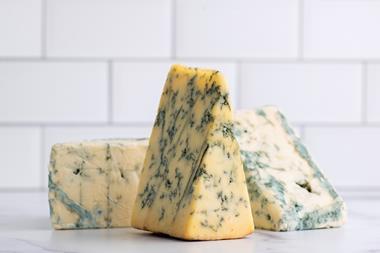

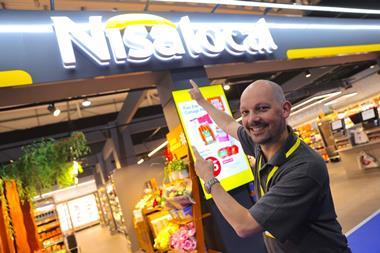
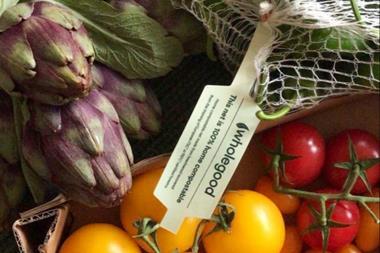


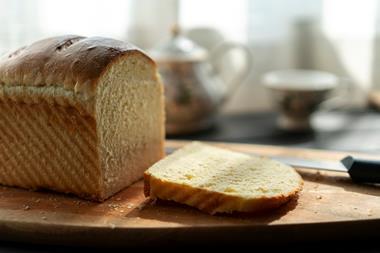
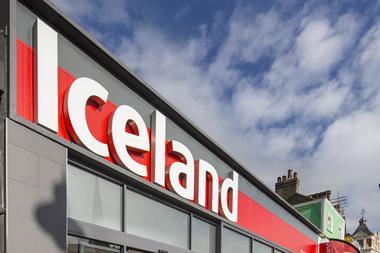
No comments yet